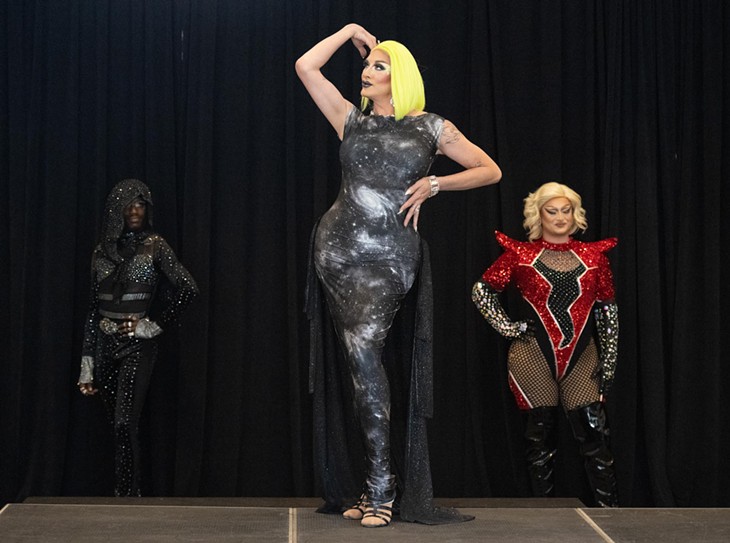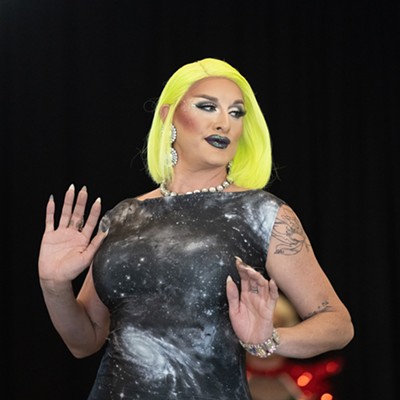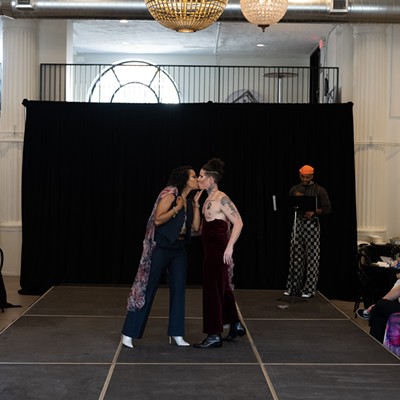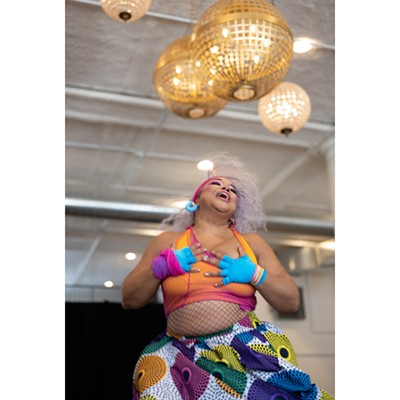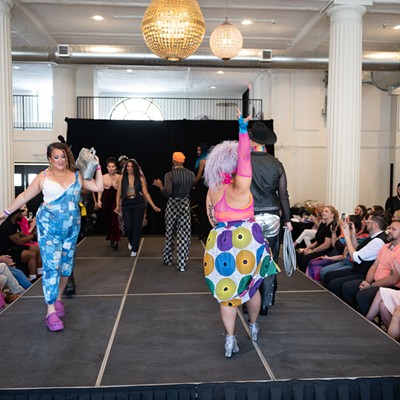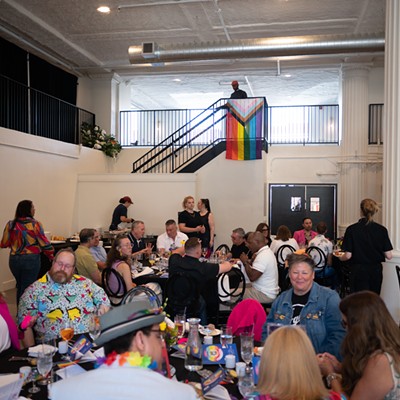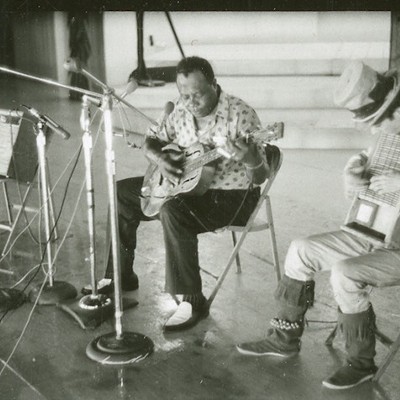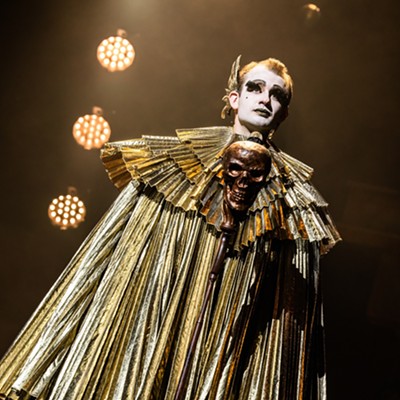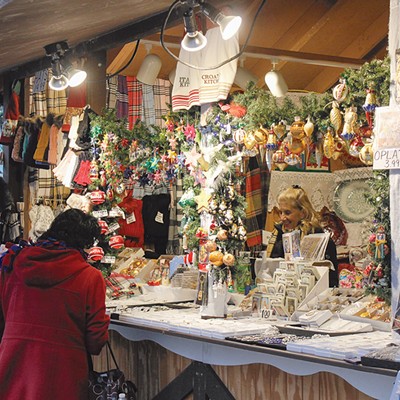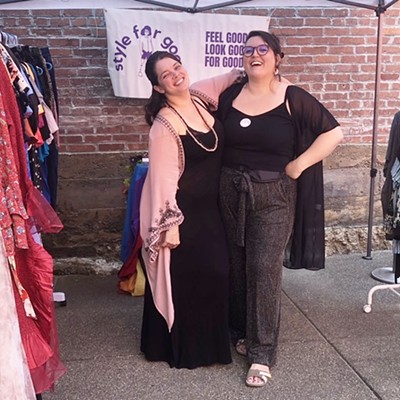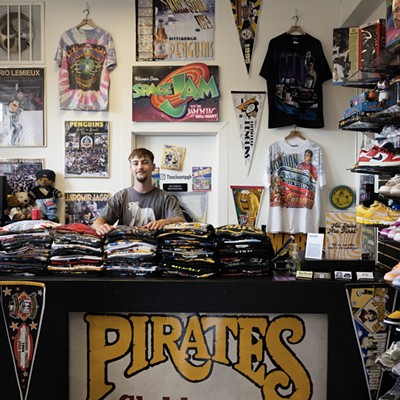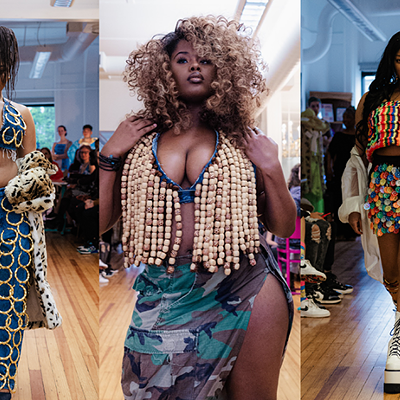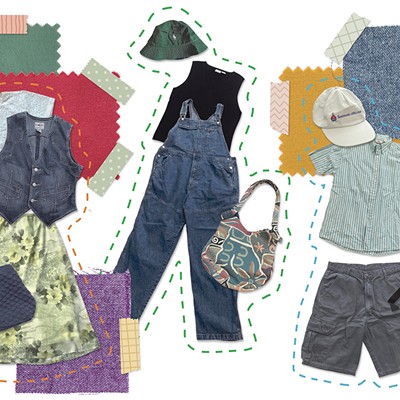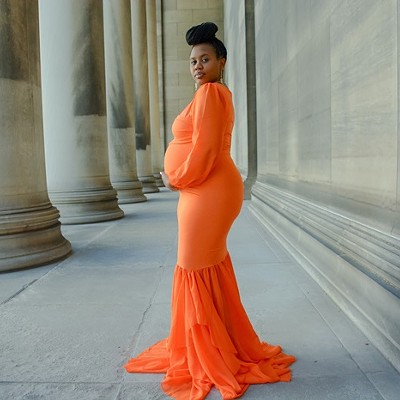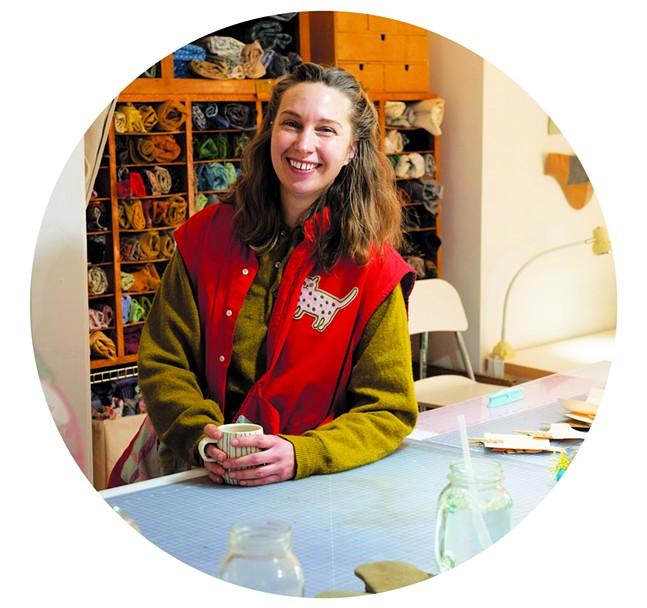
“I think [Flux Bene] can loosely be translated to positive change, or change is good,” Joy tells Pittsburgh City Paper. “That’s what I see us doing. We are not making things from scratch; we’re making things better, and, hopefully, contributing to a larger change societally in how we view clothes, sewing, and art.”
You may have seen Joy’s work at Pittsburgh’s Handmade Arcade, the Three Rivers Arts Festival, or around town on fellow Pittsburghers. Flux Bene is easily recognized by its unique patterns and large pockets.
“The pockets kind of started the whole thing, actually,” Joy says.
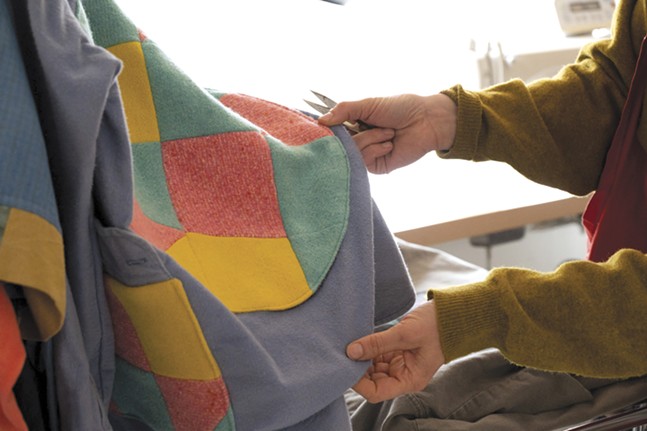
Raised in a family of quilters, Joy began sewing seriously in college. Around that time, she was exclusively wearing secondhand and vintage clothes. A midcentury house dress was the piece that changed it all – the large pockets caught Joy’s eye and inspired her to make similar clothing.
“I started adding pockets to all of my clothes, and people were like, ‘Whoa, love those pockets!’ It just became clear really quickly that everyone wanted and needed more pockets,” she says. “I think they are absolutely utilitarian, but also I generally, in my body, feel more comfortable when I have a place to put my hands.”
Joy, aided by two employed friends, crafts monthly collections of 25 to 30 unique pieces, each made with over 90% reused materials.
The process to create a Flux Bene piece starts with sourcing used garments from thrift stores or online secondhand markets. Joy looks for clothes with small imperfections that are about to be discarded. She also sources fabric from many different places, such as Fab Scrap and the Salvation Army’s biannual fabric sales. The only new material she uses is American-made muslin for the garments’ hem tape and tags.
After gathering her materials, she often gives them new life by screenprinting or hand-dyeing them. She then sorts the raw materials into different styles and works with her team to sew each piece at her home studio.
Though time-consuming, Joy has seen her efforts pay off time and time again. Flux Bene has many repeat customers who wear their pieces daily and receive numerous compliments. However, Joy knows that finding the perfect piece can take a long time for some customers.
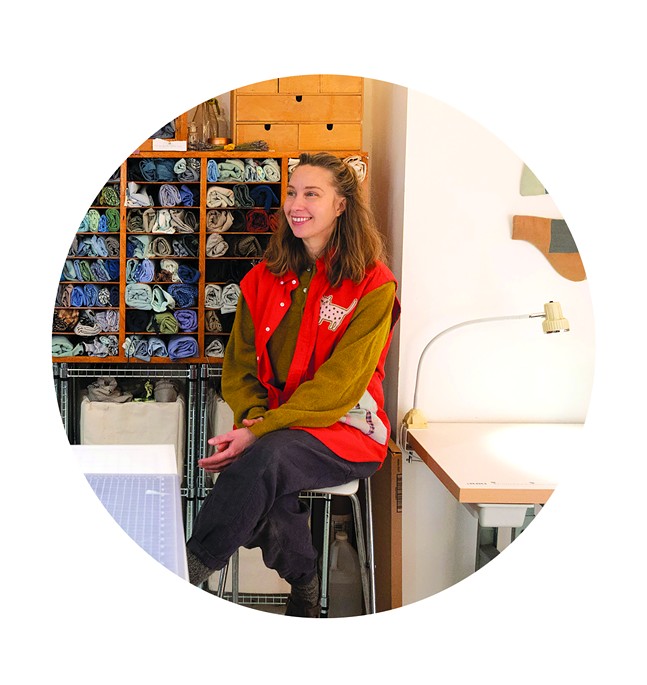
“I’ve seen it take years, and when that happens, I am just so grateful that someone hung in there, kept checking, and waited. I don’t ever want someone to make a rash decision about one of these,” she says. “I’ve seen it happen enough times now, someone puts one on and their posture changes a little bit and their face lights up.”
Joy’s commitment to sustainable fashion extends beyond her own creations. She recently began releasing patterns of Flux Bene clothing, allowing people to make their own upcycled pieces at home. This new venture is part of her 10K Garment Project. Announced in 2021, the project challenges Flux Bene to facilitate the reuse of 10,000 garments by June 2025. At the time of the announcement, Joy estimated that Flux Bene had facilitated the reuse of roughly 1,300 garments. The Flux Bene website now counts 2,355 reused garments as of last October.
“I was looking for a way to quantify the environmental impact that Flux Bene is having,” Joy says.
While Joy isn’t sure the brand will reach this goal by June 2025, she’s hoping they’ll come close with help from people downloading patterns.
“It really is reliant on how many people are making their own because we are maxed out making about 25 pieces per month, and I don’t have any plans on growing beyond that number. We’re able to keep things creative and fresh doing that amount.”
It’s obvious that Joy sees herself more as an artist than a businesswoman. She has consistently prioritized artistic integrity over financial stability, never paying herself an hourly wage throughout her years working on Flux Bene.
“When I started this, I had no idea if it was going to work, and we’re finally at a point now where I feel confident that this is working,” she says. “Part of this as an art project is experimenting with different ways of doing business, having a business, and thinking about business. I want it to be as transparent and equitable as it can because it’s part of the project.”

Joy wholeheartedly rejects the current fast-fashion landscape, instead embracing the simple joys of slow fashion and textile art.
“The thing that feeds me most is seeing people try them on. Nothing really beats that,” she says. “I think clothing is very personal and it feels like such an honor to be let into people’s lives in that way.”
Locals can support Joy’s work by buying her clothes or patterns on Flux Bene’s website, visiting her booths at local markets, or participating in her frequent fundraisers for social issues. Alternatively, if anyone knows actor Amy Sedaris, Joy is dying to give her a custom Flux Bene piece.

